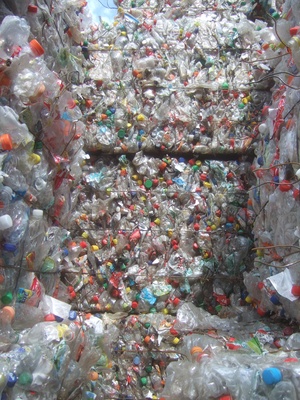“Progress is indispensable for ensuring the viability of the plastics recycling industry. While the commitment from recyclers remains strong, our sector has faced unprecedented challenges, first with the halt of activities during the COVID-19 outbreak, followed by the energy crisis in 2022”, commented Ton Emans, PRE President. “Most recently, in 2023, the concerningly low demand for recyclates hit the sector, resulting from low prices for virgin plastics due to reduced industrial production in the EU and cheap imports of recycled plastic from outside the EU. Moving forward, enforcement of legislative measures will be essential in ensuring the progress can be continued”, he added.
The report looks at 850 different recycling sites across Europe, the majority of which are small, with an average capacity of 15,000 tonnes. In terms of socio-economic impact, the plastics recycling sector counts with € 10.4 billion in turnover and employs more than 30,000 workers.
Concerning polymer grades, flexible polyolefins, PET and rigid polyolefins remain those with the highest capacities, representing more than 80% of the total. With this year’s report, PRE introduced a precise split between the capacities of rigid polyethylene (PE) and rigid polypropylene (PP), which were previously reported on together.
Looking at the geographic dispersion of recycling activities in Europe, Germany, Italy, Spain, the United Kingdom, and France represent 60% of the total. In Spain, Italy, Poland and Belgium, PE and PP flexibles hold the largest relative share of installed recycling capacity in comparison to other polymers, while in France, nearly one-third of the total capacity is dedicated to PET.
Moreover, Belgium, the Netherlands, Poland, and Romania experienced the fastest growth in capacities compared to the previous year.
The plastics recycling industry in Europe maintained, over the years, a steady stream of investment to secure the necessary capacities to reach the legislative targets. However, today there is cause for concern when it comes to achieving these targets given the lower growth rate of recyclates production due to a decreased demand. There are also environmental repercussions involved as, only in 2022, plastics recycling activities resulted in the reduction of over 10 million tonnes of CO2 emissions, equivalent to removing from circulation all Belgian passenger cars for a year.
Therefore, new legislative developments will be key in driving the success of plastic’s circularity. This includes, among others, the proposals for the Packaging and Packaging Waste Regulation or the End-of-Life Vehicles Directive, which introduce new targets as drivers for improving the waste management of plastics in Europe.
These measures must be further paired with enforcement mechanisms and the harmonisation of practices across Member States.







[…] A legutóbbi adatok szerint az éves európai műanyag-újrahasznosítási kapacitás 2022-ben 12,5 millió tonna volt.Az Európai Bizottság 2023-as jelentése szerint a 27 tagállam közül 18 esetében fennáll […]